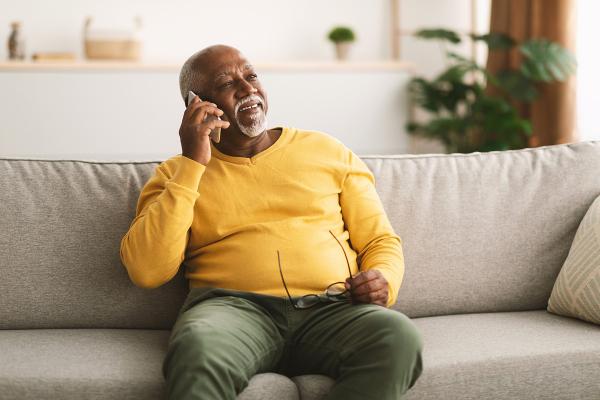
It may be time to get your hearing checked. AARP Hearing Solutions makes it simple. Find a provider today.
Get the inside scoop from hearing expert Monica Murray, Au.D., of UnitedHealthcare Hearing.

Many people start to notice hearing problems as they get older. And wearing hearing aids could make a big difference. Whether you’re new to the world of hearing aids or you’ve been wearing these devices for a while now, it’s normal to have some questions. In this series, an expert audiologist at UnitedHealthcare Hearing gives helpful advice about common concerns.
I listen to music on headphones when I work out. But I keep reading that loud music can be bad for hearing. How can I listen safely?
Lots of people use headphones or earbuds to listen to music. Streaming your favorite playlist from your smartphone can be a fun way to stay motivated when you exercise. Plus, headphones let you enjoy your music in public without bothering anyone around you.
And it’s safe to do, as long as you keep the volume at a normal level.
But taking precautions is a good idea. Being exposed to any sound that’s too loud — whether it’s music or a jackhammer — could damage the hair cells in your inner ear. That includes using headphones or earbuds with the volume turned too high.
Over time, this damage can lead to irreversible noise-induced hearing loss. And it can affect people of any age, from kids to teens to adults.
When you wear headphones or earbuds, the sound is close to your eardrum. So it’s important to keep that volume at a safe level. Here’s how to do it.

It may be time to get your hearing checked. AARP Hearing Solutions makes it simple. Find a provider today.
Try the 60-60 rule. This is a really great rule that I follow myself. Use your headphones for no more than 60 minutes at a time and at no more than 60% of maximum volume. That 60% max volume keeps the sound output at a safe level.
Most smartphones let you set a volume limit in the Sound settings. Depending on your phone, it might be called “Headphone safety” or “Media volume limit.” When you set the maximum volume to 60%, it means you can’t accidentally turn your music up louder than that.
Ask for a quick sound check. Sit next to a family member or friend. Put your headphones or ear buds in and play music at your typical volume. Ask them if they can hear sound from your headphones. If the answer is yes, your volume is definitely too high.
Sometimes people don’t know how loud they’re playing their music. Once you ask, you may be surprised to find that others around you can hear it.
Be mindful of the headphone volume with other types of media, too. Maybe you like to stream your favorite TV show using earbuds when you’re traveling, for example. Or you wear headphones to listen to podcasts or play video games.
By following these headphone safety steps now, you can help protect your hearing for the future.
(If you’re a member of AARP®, you get multiple follow-up appointments and a trial period to try out your new prescription hearing aids at no extra cost. Learn more.)
Meet the expert
Monica Murray, Au.D., is vice president of program development at UnitedHealthcare Hearing and a nationally recognized hearing health expert.
Information is for educational purposes only and is not a substitute for the advice of a licensed medical provider. Consult your provider prior to making changes to your lifestyle or health care routine.
AARP Hearing Solutions is available to all AARP members and does not require a health insurance plan from UnitedHealthcare. The AARP hearing program discount cannot be combined with any other discounts, promotions, coupons or hearing aid benefit plans unless noted herein. Products or services that are reimbursable by federal programs including Medicare and Medicaid are not available on a discounted or complimentary basis. AARP commercial member benefits are provided by third parties, not by AARP or its affiliates. Providers pay a royalty fee to AARP for the use of its intellectual property. These fees are used for the general purposes of AARP. Some provider offers are subject to change and may have restrictions. Please contact the provider directly for details. UnitedHealthcare Hearing is provided through UnitedHealthcare, offered to existing members of certain products underwritten or provided by UnitedHealthcare Insurance Company or its affiliates to provide specific hearing aid discounts. This is not an insurance nor managed care product, and fees or charges for services in excess of those defined in program materials are the member's responsibility. UnitedHealthcare does not endorse nor guarantee hearing aid products/services available through the hearing program. This program may not be available in all states or for all group sizes. Components subject to change.
Hearing aids purchased in the Silver technology level will receive 1 follow-up visit.